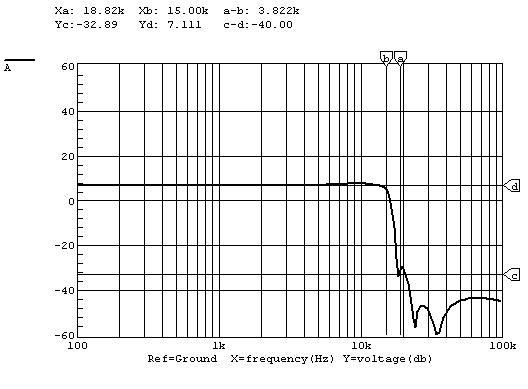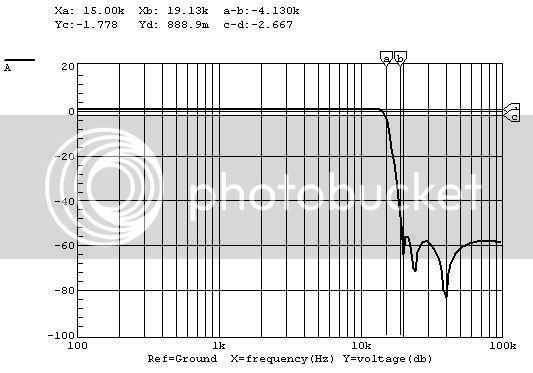Hi all,
I'm looking for the schematic of a 16KHz low pass filter with the highest possible slope steepness. It will be used in the audio path of wireless in-ear systems to avoid any high audio frequencies (created by boosting using shelves) to upset the 19KHz pilot tone of the transmitter.
All reasonably simple schematics or ideas are very welcome!
Greetz,
Rogy
I'm looking for the schematic of a 16KHz low pass filter with the highest possible slope steepness. It will be used in the audio path of wireless in-ear systems to avoid any high audio frequencies (created by boosting using shelves) to upset the 19KHz pilot tone of the transmitter.
All reasonably simple schematics or ideas are very welcome!
Greetz,
Rogy








